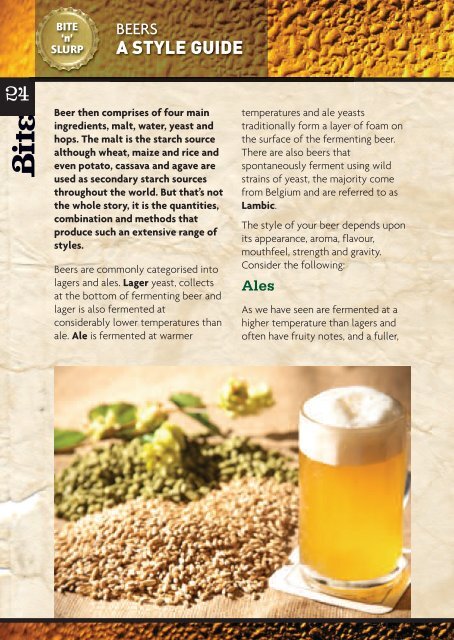Download July 2010 - Bite Magazine
Download July 2010 - Bite Magazine
Download July 2010 - Bite Magazine
Create successful ePaper yourself
Turn your PDF publications into a flip-book with our unique Google optimized e-Paper software.
24<br />
BITE<br />
‘n’<br />
SLURP<br />
BEERS<br />
A STYLE GUIDE<br />
Beer then comprises of four main<br />
ingredients, malt, water, yeast and<br />
hops. The malt is the starch source<br />
although wheat, maize and rice and<br />
even potato, cassava and agave are<br />
used as secondary starch sources<br />
throughout the world. But that’s not<br />
the whole story, it is the quantities,<br />
combination and methods that<br />
produce such an extensive range of<br />
styles.<br />
Beers are commonly categorised into<br />
lagers and ales. Lager yeast, collects<br />
at the bottom of fermenting beer and<br />
lager is also fermented at<br />
considerably lower temperatures than<br />
ale. Ale is fermented at warmer<br />
temperatures and ale yeasts<br />
traditionally form a layer of foam on<br />
the surface of the fermenting beer.<br />
There are also beers that<br />
spontaneously ferment using wild<br />
strains of yeast, the majority come<br />
from Belgium and are referred to as<br />
Lambic.<br />
The style of your beer depends upon<br />
its appearance, aroma, flavour,<br />
mouthfeel, strength and gravity.<br />
Consider the following:<br />
Ales<br />
As we have seen are fermented at a<br />
higher temperature than lagers and<br />
often have fruity notes, and a fuller,




